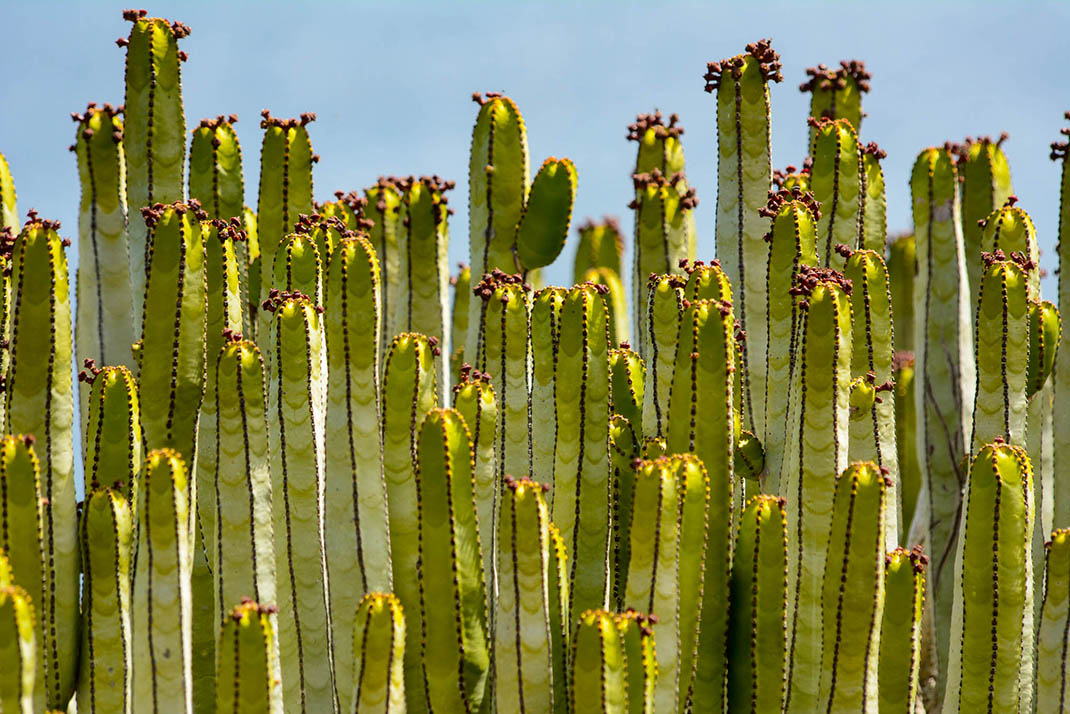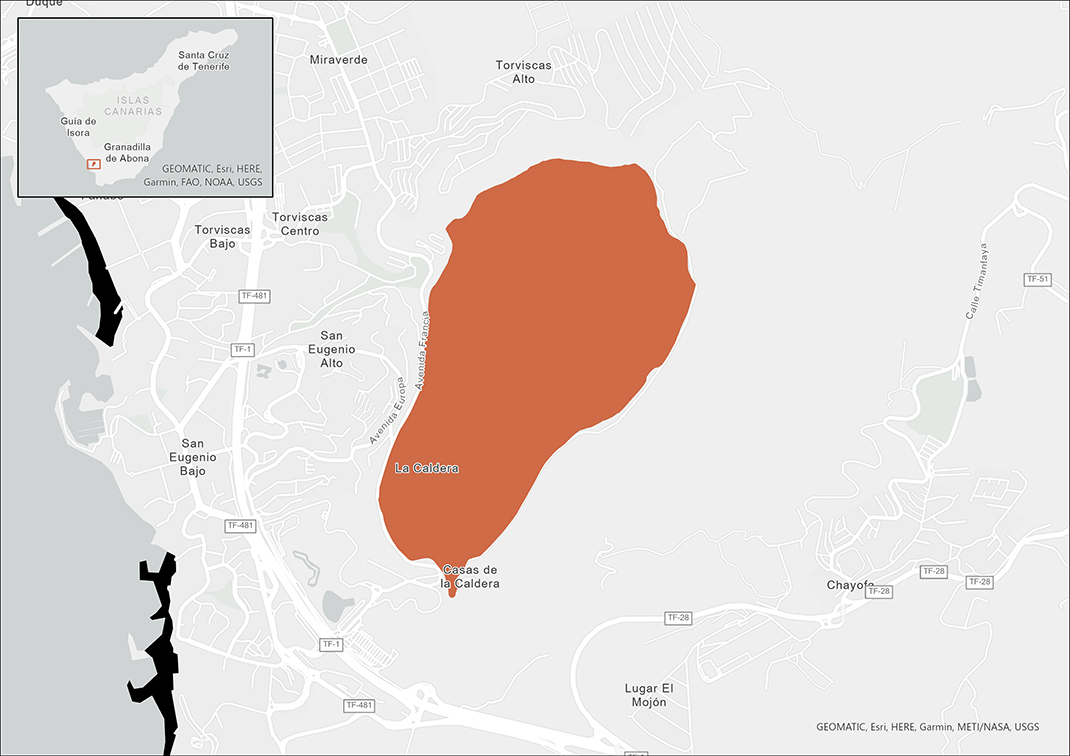Plan your next adventure
Tailor your own route along Tenerife’s trails quickly and easily..
Go to planner
The Caldera del Rey is one of the best examples of a caldera formed by a phreatomagmatic eruption in the Canary Islands.
This type of volcanism occurs when the rising lava comes into contact with a large mass of water, resulting in a violent explosion that produces calderas that are often rounded and shallow in form.
Recommended time to visit: All year round.
The Caldera del Rey has a figure-of-eight shape, which indicates that it was formed in two different eruptive phases that gave rise to two interlocking calderas.
The smaller of the two semi-calderas, located to the south of the natural monument, is the older and more explosive, and ejected large quantities of material outwards.
The larger of the two accumulated more material, so its diameter is greater. However, as it was less violent, it expelled the material over a shorter distance and formed higher slopes.
Since these landforms were created, erosion and human action have given them their present shape. In particular, the island’s farmers have been cultivating crops in this spot for centuries due to the special microclimate found in its interior.

The potential vegetation of the caldera is the tabaiba dulce (Euphorbia balsamifera), which is common along this strip of the island’s most arid terrain. You will also find cardón or Canary Island spurge (Euphorbia canariensis), balo (Plocama pendula), aulaga (Launaea arborescens) and salado (Schizogyne sericea).
In addition, this area also has three endemic island species: bejeque puntero de Tenerife (Aeonium urbicum meridionale), a subspecies of marguerite named magarza grácil (Argyranthemum frutescens ssp. gracilescens) and cerraja de Adeje (Sonchus fauces-orci).
The bottom of the caldera is home to banana, tomato, avocado, mango and orange plantations, although in the past it was also used to produce sugar cane, ornamental flowers and tobacco.
Due to this intense agricultural activity, the wildlife is depleted, with the exception of invertebrates. Species found in the area include a very rare moth, exclusive to some localities in the south of Tenerife, and endemic Canary Island species such as a bee known as the abejilla canaria (Halictus concinnus), and a moth, the palomita reina canaria (Euxoa canariensis canariensis).
Vertebrates are scarce and are reduced to a few species of birds, such as the spectacled warbler, Berthelot’s pipit, blackcap, Canary Island chiffchaff, kestrel and barn owl.
Reptiles such as the Tenerife lizard may also be seen scurrying around.

180.7 ha (0.1% of the island).
Tabaiba dulce (Euphorbia balsamifera), cardón or Canary Island spurge (Euphorbia canariensis), balo (Plocama pendula), aulaga (Launaea arborescens), salado (Schizogyne sericea), bejeque puntero de Tenerife (Aeonium urbicum meridionale), magarza grácil (Argyranthemum frutescens ssp. gracilescens), cerraja de Adeje (Sonchus fauces-orci), abejilla canaria (Halictus concinnus), palomita reina canaria (Euxoa canariensis canariensis), spectacled warbler, Berthelot’s pipit, Eurasian blackcap, Canary Island chiffchaff, kestrel, barn owl, Tenerife lizard.
Tabaibal (Euphorbia balsamifera, Euphorbia lamarckii).
To consult permits for use and updated regulations for this Protected Natural Area, visit the official website of the Government of the Canary Islands.

Tailor your own route along Tenerife’s trails quickly and easily..
Go to planner